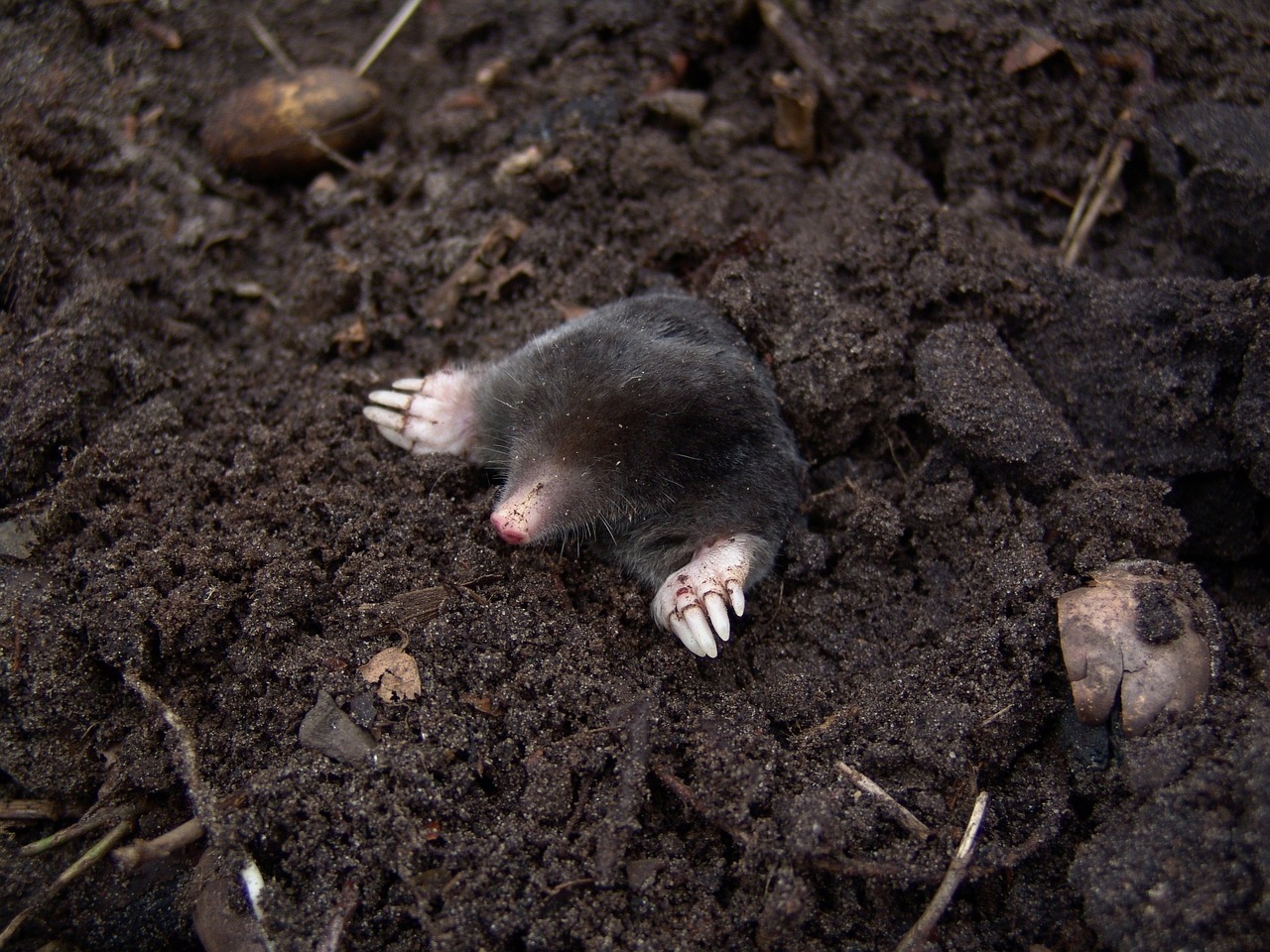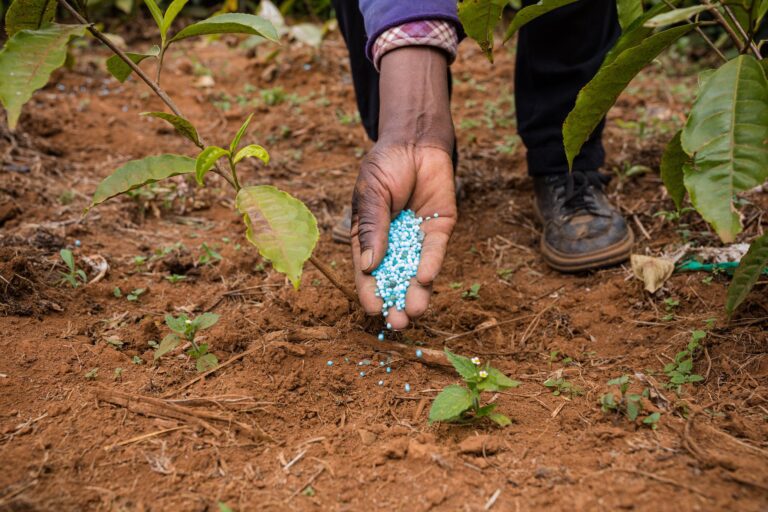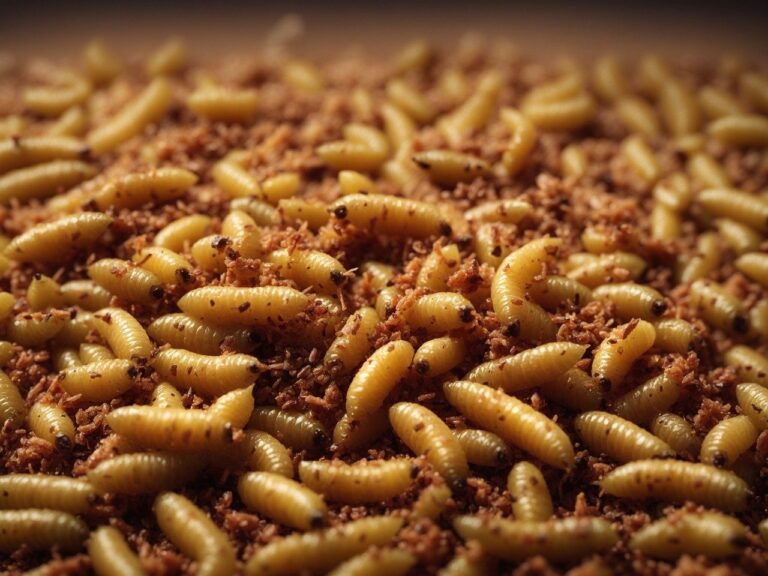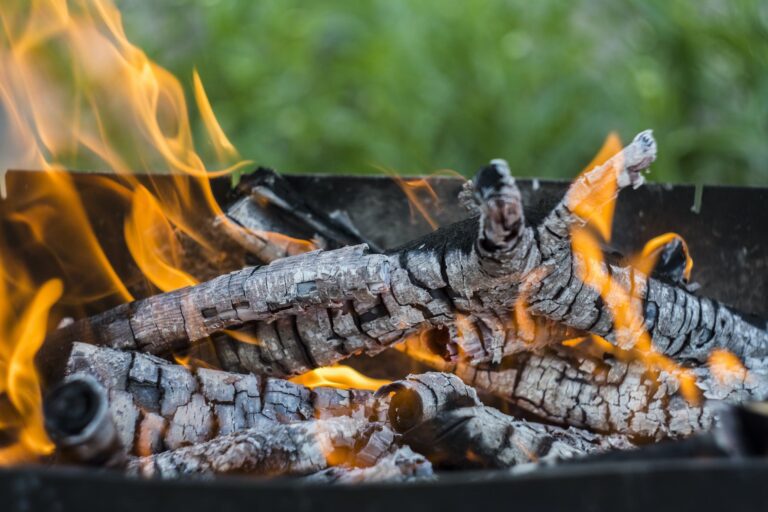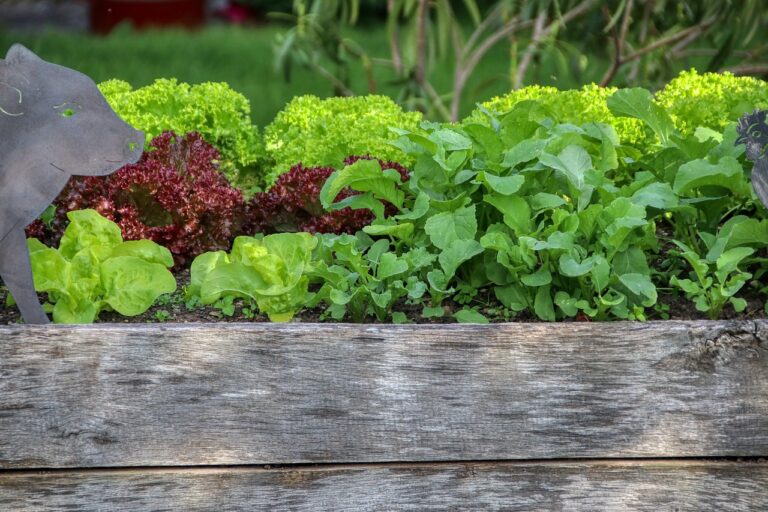Will this attract rodents?
It’s a valid concern, one that many gardeners and compost enthusiasts ponder. The last thing any of us want is an infestation of furry creatures rummaging through our carefully crafted compost piles.
In this discussion, we will explore the factors that attract rodents, examine whether composting is a magnet for these critters, and discover effective ways to rodent-proof our compost bins.
So, let’s dig in and uncover the truth about composting and its potential rodent visitors.
Understanding Rodent Behavior
Understanding rodent behavior is essential when it comes to effectively managing composting systems and preventing rodent infestations. Research on rodent behavior has provided valuable insights into their habits and tendencies, helping us develop strategies to keep them away from composting areas.
Rodents, such as rats and mice, are naturally curious and opportunistic creatures. They’re constantly on the lookout for food, shelter, and nesting sites. This makes compost piles an attractive target for them. Composting materials provide a warm, moist environment that rodents find suitable for nesting and foraging.
Studies have shown that rodents are more likely to be attracted to compost piles that contain certain types of food waste, such as fruits, vegetables, and grains. These food sources are rich in nutrients and provide an abundant food supply for rodents. Additionally, the presence of decaying organic matter in compost piles releases odors that rodents can detect from a distance, further attracting them to the area.
To effectively manage composting systems and prevent rodent infestations, it’s crucial to understand these habits and tendencies. By avoiding the inclusion of certain food waste items in compost piles and implementing proper composting techniques, we can reduce the attractiveness of composting areas to rodents. Regular monitoring and maintenance of compost piles also play a crucial role in preventing rodent infestations.
Factors That Attract Rodents
Composting materials that attract rodents can be influenced by various factors. Understanding rodent diets is key to identifying what might attract them to composting areas. Rodents are omnivores, meaning they consume both plant and animal matter. They’re particularly drawn to food scraps such as fruits, vegetables, grains, and even meat. These items are commonly found in household compost bins and can serve as a tempting food source for rodents.
Additionally, rodents are attracted to the warmth and shelter that compost piles provide. As they burrow within the piles, they create tunnels and nests, making it easier for them to access the food sources. Signs of rodent activity include droppings, gnaw marks, and burrows near the composting area.
Implementing proper composting practices can help reduce the likelihood of attracting rodents. This includes burying food scraps deep within the compost pile, using a closed container or bin to prevent access, and avoiding adding meat or dairy products to the compost. Regularly turning the compost pile can also deter rodents by disrupting their nesting areas.
Does Composting Attract Rodents?
I have often wondered whether composting attracts rodents to my backyard.
In order to understand this, it’s important to consider rodent behavior and how it relates to composting.
Additionally, there are ways to prevent rodent infestations when composting.
It’s important to address common misconceptions about the relationship between composting and rodents.
Rodent Behavior and Composting
Research suggests that composting can attract rodents due to the availability of food and shelter. Understanding rodent behavior is crucial in implementing effective rodent control methods when composting.
Rodents are opportunistic and will seek out easily accessible food sources. Composting provides a plethora of food options, including vegetable scraps, fruit peels, and food waste. Additionally, the warm and moist environment created by compost piles offers rodents a comfortable shelter.
To minimize the risk of attracting rodents, it’s essential to follow proper composting guidelines. This includes avoiding adding animal products, such as meat or dairy, to the compost pile. Additionally, regularly turning the compost and maintaining a balanced carbon-to-nitrogen ratio can help speed up decomposition, reducing the availability of food for rodents.
Preventing Rodent Infestations
To prevent rodent infestations when composting, it’s important to take three key steps:
- Use a proper container: Opt for a rodent-proof compost bin that is made of sturdy materials like metal or thick plastic. Make sure it has a secure lid that effectively keeps rodents out.
- Choose the right placement: Position the compost bin on a concrete or gravel pad, and keep it away from buildings and overhanging trees. This helps reduce the chances of rodents easily accessing the compost.
- Maintain the compost properly: Avoid adding meat, dairy, or oily food scraps to the compost, as these can attract rodents. It’s also important to turn the compost regularly to maintain aerobic conditions, which discourages rodents from nesting.
Common Misconceptions About Composting and Rodents
When it comes to composting and rodents, there are common misconceptions that need to be addressed to clarify whether composting attracts rodents. Some people believe that having a compost pile in your backyard will automatically invite rodents into your space. However, this is not necessarily true. Rodent behavior is influenced by various factors, including food availability, shelter, and proximity to human activity. To help dispel these misconceptions, let’s take a look at the following table:
| Misconception | Rodent Behavior | Reality |
|---|---|---|
| Composting attracts rodents | Rodents are naturally drawn to compost | Rodents are attracted to food sources, not specifically compost |
| Rodents will infest your compost pile | Compost piles are ideal nesting areas for rodents | Properly managed compost piles are not attractive or suitable for rodent nesting |
| Composting creates a rodent problem | Composting promotes rodent populations | Rodents may be present, but proper compost management can minimize their impact |
As you can see, the misconceptions about composting and rodents are often based on misunderstandings of rodent behavior. It is important to remember that while rodents may be present in composting areas, proper management can effectively deter them and prevent any potential problems.
Rodent-Proofing Your Compost Bin
One effective way to ensure that rodents don’t invade your compost bin is by implementing rodent-proofing measures. Rodents are attracted to compost bins because they provide an abundant source of food and shelter. To prevent them from accessing your compost, consider the following rodent-proofing techniques:
- Secure the lid: Make sure your compost bin has a tight-fitting lid that can’t be easily opened by rodents. This will prevent them from getting inside and rummaging through your compost.
- Elevate the bin: Raise your compost bin off the ground using a platform or cinder blocks. This will make it more difficult for rodents to access the contents of the bin.
- Use hardware cloth: Line the bottom and sides of your compost bin with hardware cloth, a sturdy wire mesh, to prevent rodents from burrowing into the bin. Ensure that the mesh has small enough openings to keep rodents out.
These rodent-proofing techniques can help keep your compost bin free from unwanted visitors. By implementing these measures, you can continue composting without worrying about attracting rodents to your yard. Remember, proper composting and pest control go hand in hand to create a healthy and rodent-free environment.
Proper Composting Practices
When it comes to proper composting practices, there are a few key points to keep in mind.
First, implementing odor control techniques is essential to prevent attracting rodents. This can be achieved by balancing the carbon and nitrogen ratios, avoiding meat and dairy products, and regularly turning the compost pile.
Second, using rodent-proof compost containers is crucial in keeping pests out. Opt for containers with tight-fitting lids and sturdy construction.
Lastly, maintaining proper moisture levels is important as overly wet or dry compost can deter rodents and promote efficient decomposition.
Odor Control Techniques
To effectively control odors in composting, proper practices must be followed. Here are three odor control techniques that can help prevent rodents and keep your composting area smelling fresh:
- Properly balance the carbon-to-nitrogen ratio: Maintaining a balanced ratio of green (nitrogen-rich) and brown (carbon-rich) materials is crucial. Too much nitrogen can cause strong odors, while too much carbon can slow down decomposition. Aim for a ratio of about 30 parts carbon to 1 part nitrogen.
- Turn the compost regularly: Regularly turning the compost helps to aerate it, allowing oxygen to reach the microorganisms responsible for decomposition. This aerobic process helps prevent anaerobic conditions that can lead to foul odors.
- Cover the compost pile: Using a cover or lid on your compost bin can help contain odors and deter rodents. Make sure the cover is well-ventilated to allow for proper airflow.
Rodent-Proof Compost Containers
Rodent-proof compost containers are essential for proper composting practices to prevent unwanted pests and ensure a clean and efficient composting process. When it comes to rodent proof composting methods, there are several effective rodent deterrents that can be utilized.
One option is to use a compost bin with a tight-fitting lid or a lockable lid to prevent rodents from accessing the compost.
Another method is to use wire mesh or hardware cloth to cover the compost pile or bin, creating a barrier that rodents can’t penetrate.
Additionally, elevating the compost bin or using a raised composting system can help deter rodents, as they’re less likely to climb to access the compost.
Implementing these rodent-proof composting methods can help to maintain a pest-free composting environment.
Maintaining Proper Moisture Levels
Maintaining proper moisture levels is crucial for effective composting practices. Here are three important factors to consider when it comes to maintaining proper moisture levels in your compost pile:
- Preventing mold growth: Excess moisture in the compost pile can lead to the growth of mold, which can hinder the decomposition process and create an unpleasant odor. To prevent this, it’s essential to maintain the right balance of moisture. The compost should feel like a damp sponge when squeezed, with just enough moisture to promote decomposition without becoming waterlogged.
- Balancing carbon and nitrogen ratios: Moisture levels play a vital role in achieving the right balance of carbon-rich ‘brown’ materials and nitrogen-rich ‘green’ materials in the compost pile. The ideal ratio is roughly 25 to 30 parts carbon to 1 part nitrogen. Proper moisture helps break down the carbon materials and facilitates the release of nitrogen, promoting a healthy decomposition process.
- Monitoring and adjusting moisture levels: Regularly monitor the moisture content of your compost pile. If it becomes too dry, add water using a hose or a watering can. If it becomes too wet, incorporate dry materials like leaves or shredded paper to absorb the excess moisture. By maintaining proper moisture levels, you can ensure a well-functioning compost pile and promote the decomposition of organic matter into nutrient-rich compost.
Choosing the Right Composting Materials
Using the appropriate materials is essential when it comes to creating a successful composting system. By choosing the right composting materials, you can ensure that your compost pile breaks down efficiently and produces nutrient-rich compost for your garden. Here are some composting tips to help you select the best materials:
| Green Materials | Brown Materials |
|---|---|
| Fruit and vegetable scraps | Dry leaves |
| Grass clippings | Straw or hay |
| Coffee grounds | Shredded newspaper |
| Plant trimmings | Cardboard |
| Seaweed | Wood chips or sawdust |
Green materials, such as fruit and vegetable scraps, grass clippings, and coffee grounds, provide nitrogen to your compost pile. Brown materials, such as dry leaves, straw, and shredded newspaper, provide carbon. It’s important to maintain a balance between these two types of materials, aiming for a ratio of approximately 3 parts brown to 1 part green.
By incorporating a variety of materials, you can create a diverse compost pile that decomposes efficiently and avoids any potential issues with odors or pests. Avoid adding meat, dairy products, or oily materials, as they can attract rodents and other unwanted critters.
Monitoring and Maintaining Your Compost
Regularly checking the temperature and moisture levels of your compost pile is crucial for its successful decomposition and maintenance. Monitoring these factors ensures that the composting process is happening efficiently and helps troubleshoot common composting problems.
Here are three key aspects to monitor when maintaining your compost:
- Temperature: Composting is an aerobic process that requires the right temperature range to support the activity of microorganisms. Aim for a temperature between 120-160°F (49-71°C). If the temperature is too low, the decomposition process slows down. On the other hand, if the temperature is too high, it can kill beneficial microorganisms. Regularly check the temperature using a compost thermometer to ensure it stays within the optimal range.
- Moisture: Moisture is essential for the decomposition process. Your compost pile should be moist, but not waterlogged. Aim for a moisture level of around 40-60%. If it’s too dry, decomposition slows down. If it’s too wet, it can lead to unpleasant odors and attract pests. To maintain proper moisture levels, occasionally water the compost pile or cover it during heavy rain.
- Turning: Regularly turning or aerating your compost pile helps maintain oxygen levels and promotes even decomposition. It prevents the formation of compacted areas and allows for better moisture distribution. Use a pitchfork or compost aerator to turn the pile every couple of weeks. This helps mix the materials and exposes them to fresh air, aiding in the breakdown process.
Additional Tips for Rodent Prevention
To effectively prevent rodents from infiltrating your compost pile, implementing a few additional tips can be highly beneficial. There are various rodent prevention techniques you can employ to keep these unwanted visitors at bay.
One effective method is to ensure that your compost pile is properly enclosed or covered. This will prevent rodents from accessing the compost and creating nests within it.
Additionally, it’s important to avoid placing any food scraps or materials that attract rodents, such as meat or dairy products, into your compost pile. These items can entice rodents and increase the likelihood of infestation.
Using natural rodent deterrents can also be helpful in preventing rodents from being attracted to your compost. For example, certain strong-smelling plants like mint or lavender can act as repellents. Planting these around your compost area can discourage rodents from approaching.
Another natural deterrent is installing motion-activated lights or sound devices near your compost pile. These devices can startle rodents and discourage them from staying in the area.
Regularly monitoring and maintaining your compost pile is essential for rodent prevention. This includes regularly turning the pile to discourage nesting and ensure proper decomposition.
Conclusion
In conclusion, while composting can create an environment that may attract rodents, there are steps you can take to prevent their presence.
By understanding rodent behavior and implementing proper composting practices, such as using the right materials and maintaining your compost, you can minimize the risk of attracting rodents.
Additionally, rodent-proofing your compost bin and following additional tips for rodent prevention can further discourage their presence.
With these precautions in place, you can enjoy the benefits of composting without worrying about attracting unwanted rodents.
